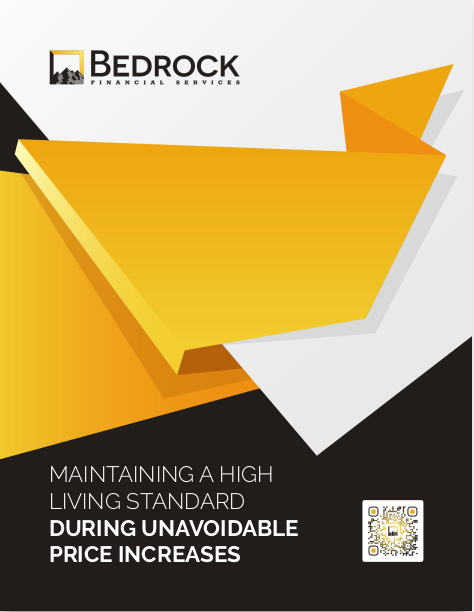Key Takeaways
-
You don’t need to water down complex insurance topics to explain them clearly—you need to organize them visually, emotionally, and conversationally.
-
The way you explain determines whether your prospect sees a puzzle or a path forward. The simpler your framing, the higher your conversion.
Start Where Your Client Is, Not Where the Product Starts
Insurance contracts often begin with structure: terms, provisions, exclusions. But clients don’t live in structured outlines. They live in feelings and goals. So instead of diving into policy mechanics, anchor your explanations in your client’s starting point: their concern, their dream, their risk.
What this looks like in practice:
-
Begin with a question: “What matters most to you if something unexpected happens?”
-
Then frame the solution: “This type of policy is designed to protect exactly that.”
This shift moves the conversation from product-first to client-first. You’re no longer trying to get them to understand something abstract. You’re making the abstract about them.
Use Visuals to Show, Not Just Tell
You don’t have to be a designer to use visuals. You just have to stop relying on jargon. When a concept gets complicated—like living benefits, cash value growth, or income replacement—reach for a whiteboard, a chart, or a printed one-pager.
Visuals that work best:
-
A line chart to show how permanent coverage accumulates value over time
-
A pie chart to compare retirement income sources
-
A table to distinguish between types of riders
It helps clients to see the relationship between benefits and trade-offs. This eliminates the need for long-winded definitions.
Break the Conversation into Time-Based Phases
Instead of explaining the entire policy at once, break it into what happens when. Clients can more easily follow your message when they know what to expect today, next year, at retirement, and at claim time.
Here’s a sample structure you can use:
-
Now: What they’re applying for, initial costs, underwriting process
-
Next 1–2 years: How cash value or coverage adjusts, any waiting periods
-
In 5–10 years: Policy value growth, living benefit access
-
At claim or retirement: How beneficiaries or retirement income are impacted
Time-based breakdowns make complicated products feel organized and digestible. They also allow you to pace the conversation.
Translate Jargon Into Outcomes
Most clients don’t care about the official definition of accelerated benefits. They care about whether they can get money when they’re sick. Translate every term into its simplest outcome.
Example translations:
-
Waiver of premium becomes: “You don’t have to pay if you’re disabled.”
-
Guaranteed insurability becomes: “You can add more coverage later, no matter your health.”
-
Indexed crediting becomes: “Your policy value can grow with the market, but it’s protected if the market drops.”
This doesn’t just simplify the explanation—it emphasizes what matters. It makes insurance human.
Use Analogies That Carry Meaning
When you compare a product to something clients already understand, you reduce mental effort. The key is to pick analogies that are both accurate and emotionally relevant.
Analogy examples:
-
Term life is like renting a safety net.
-
Permanent insurance is like buying a home that builds equity.
-
Disability insurance is your paycheck’s backup generator.
The more sensory or scenario-based the analogy, the more it sticks.
Create One Core Visual That Sums Up the Entire Offer
People forget details. But they remember simple, well-structured visuals. Create a single-page visual that shows the full picture: what the product does, when it works, and how it helps.
Include in your visual:
-
A timeline of how the policy evolves
-
Key milestones where value is gained or accessed
-
A side-by-side of benefits vs. costs
You’re not just leaving behind marketing material. You’re giving your client a tool to explain it to someone else—a spouse, parent, or friend. And if they can explain it, you’ve done your job.
Clarify What the Product Does Not Do
You build more trust by clearly stating the limitations. Every product has a trade-off. Be the first to say it. When you explain what a policy won’t cover or when it doesn’t apply, you give your client mental room to trust the parts that do apply.
Examples:
-
“This plan won’t build any savings over time—it’s just there for protection.”
-
“This coverage only kicks in if the diagnosis meets certain criteria.”
-
“You’d need to hold the policy for at least 10 years to access this benefit fully.”
Clarity about limitations actually increases conversion. You’re proving you’re not hiding anything.
Pause to Confirm Understanding (Without Quizzing)
You don’t need a checklist of questions to know if someone’s following. But you do need regular checkpoints. Instead of asking, “Does that make sense?” try one of the following:
-
“How does that sound so far?”
-
“Is that what you expected?”
-
“Would you like a quick summary before we go on?”
These keep the tone conversational and collaborative. They also let you catch confusion before it becomes resistance.
Use a Two-Column Summary at the End
Wrap up every product explanation with a clear summary. A two-column layout is one of the easiest ways to help clients mentally organize what they just heard.
Column headers:
-
What You Get (death benefit, cash value, living benefits, riders)
-
What It Takes (monthly premium, health underwriting, commitment period)
If you hand this to the client or walk them through it, you’ll reinforce the value-to-cost ratio without sounding like a salesperson.
Keep the Delivery Conversational
If you find yourself talking too long without interruption, you’ve slipped into “textbook” territory. Keep the rhythm of a conversation by inviting your client into it.
Conversation cues:
-
Ask early and often: “Have you heard of this before?” or “What’s your impression of that?”
-
Use natural transitions: “Let’s take a look at how this plays out over time.”
-
Let them fill in blanks: “If you were unable to work for six months, what would you want covered?”
You’re not a lecturer. You’re a translator of risk and reward.
Keep Their Goals in View Until the End
People buy insurance when it fits into something bigger than itself. That’s why it helps to return to the original goal they shared with you at the start.
Try this structure:
-
Start: “You mentioned that protecting your family’s income is most important to you.”
-
Middle: “Here’s how this product supports that priority.”
-
End: “Do you feel this still lines up with what matters most to you?”
Framing the end around them makes the whole conversation feel more relevant and less like a pitch.
You Don’t Have to Simplify the Product—Just the Experience
Clients aren’t looking for watered-down insurance. They’re looking for clear, honest, and relevant conversations. When you use visuals, analogies, and time-based structuring, you keep the information intact while making the experience simpler.
That’s the difference between a client walking away feeling lost and one walking away ready to buy.
Sign Up to Make This Easier
At Bedrock Financial Services, we help professionals like you turn complex product stories into clear, client-ready visuals and frameworks. Our tools and training are built to shorten the learning curve—for you and your prospects.
Ready to stop sounding like a textbook? Join us, and let’s help your clients finally get it.







